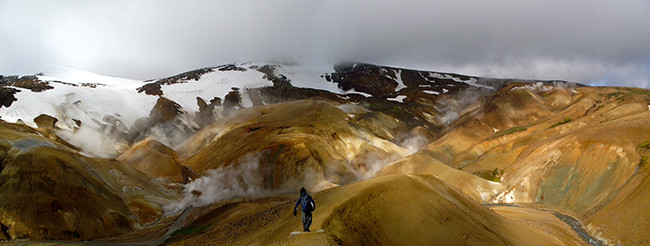Early Earth Not the Hell It Was Believed To Be, Say Geologists

A team of geologists have concluded that early Earth was not as hot as earlier believed, but similar to the present-day planet.
They base their surmise on a detailed comparison of zircon crystals that formed more than 4 billion years ago with those formed more recently in Iceland.
The study was conducted by a team of geologists directed by Calvin Miller from Earth and Environmental Sciences at Vanderbilt University, and published online this weekend by the journal Earth and Planetary Science Letters.
Inability to find rock formation from the early period had led geologists to assume the earth then was so hot it could melt any rocks or that constant asteroid bombardment melted them. But 30 years ago geologists discovered zircon crystals preserved in sandstone. Using radiometric dating, they were found to be older than 4 billion years.
The finding of zircon changed the theories and geologists suggested the earth was not so hellishly hot but had cooled at some period to contain water as large as oceans.
However, not everyone agreed. Some sections still insisted that the earth while not too hot was still formidable with hot environments like the magma pouring out of Iceland's volcanoes.
But a study of Iceland's magma revealed it to be hotter than what formed the earth's crust.
A study of Iceland zircons showed that they were distinctly different from those found elsewhere and shown to be four billion years old. The Iceland zircons formed from magmas hotter than the Hadean zircons.
For now, it looks like the first 500 million years of the Earth's existence was not as torrid as believed with the planet covered by a magma ocean. But a cooler place that allowed the zircon crystals to form.
© Copyright IBTimes 2025. All rights reserved.





















